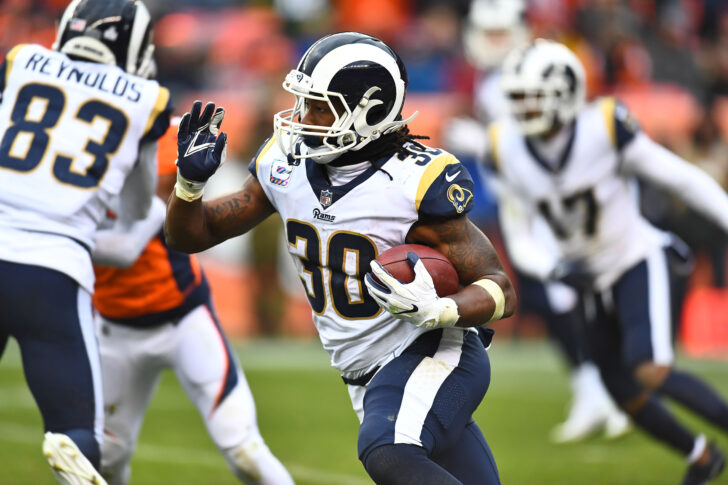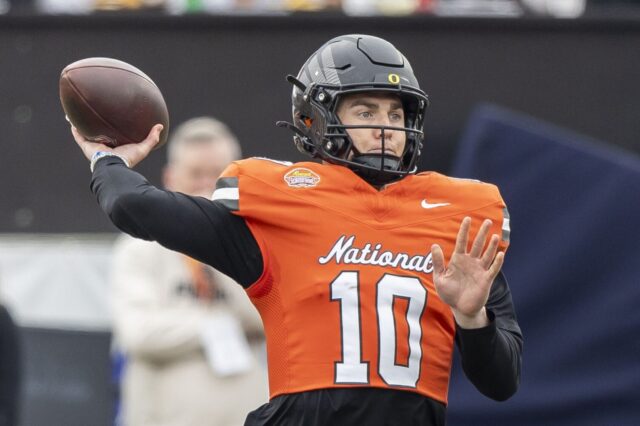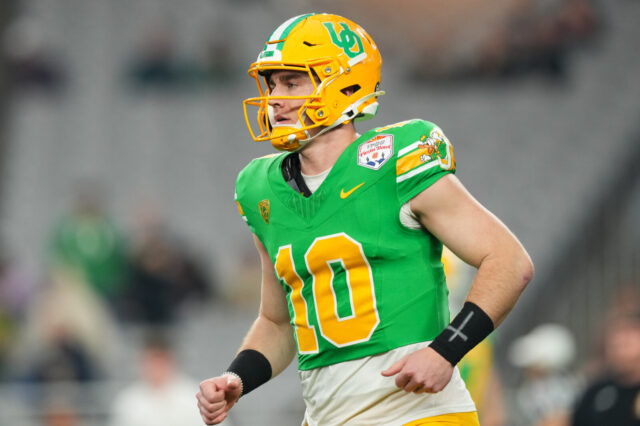Rumors of potential free agent signings are a staple of the NFL offseason and they can range from plausible to downright preposterous.
Recently the Broncos have been tied to a couple of big-name running backs, although they would be wise to avoid signing a running back in free agency. Their need in the backfield isn’t a pressing one, or even much of a need at all, considering the depth at the position and the relative insignificance of the running back in the modern NFL.
The last running backs available that would be an upgrade on what Denver already has at the position are Melvin Gordon, and now, Todd Gurley.
Gordon sat out the first half of the 2019 season in an attempt to increase his income but, as fines stacked up, he returned only to see his starting role taken by Austin Ekeler. He averaged 3.8 yards per carry, had the third-most fumbles in the league despite playing only 12 games, and had a downright terrible -7.6% DVOA (Football Outsiders’ metric for value per play) on the season.
Gurley was once widely regarded as the best running back in the NFL but, just a year removed from All-Pro Honors, knee injuries and inconsistent play have greatly reduced his efficiency. In 2019, Gurley carried the ball 223 times for an average of 3.8 yards per carry and earned a DVOA of -3.3%, ranking 25th in the league. That’s down from 4.9 yards per carry and a league-leading DVOA of 23.6% in 2018.
Neither of these players are realistic options for the Broncos because each should demand upwards of $8 million per year, and each are fairly large gambles.
From where they are now, the Broncos’ best option is to push forward with the backfield they have and add a running back late in the draft for some depth. When Phillip Lindsay’s contract ends in 2021, the Broncos will likely have to spend some money on a running back, so for now, it just makes sense to go through the draft.
Another reason the Broncos should avoid diving into the pool of free-agent running backs is that big-name backs who have signed second contracts recently have seen a steep decrease in production.
 Only two of these backs who signed second contracts in the last three years averaged more than four yards per carry, Ezekiel Elliott and Duke Johnson.
Only two of these backs who signed second contracts in the last three years averaged more than four yards per carry, Ezekiel Elliott and Duke Johnson.
Elliott had a quiet year by his lofty standards but by no means was it bad. In fact, it was his most efficient year as he led all backs in DYAR and led all backs with at least 250 carries in DVOA. Johnson also had a very efficient year but his usage was limited due to the fact that he had to split carries with a rejuvenated yet inefficient Carlos Hyde. Either way, Johnson would most likely have regressed to the mean with more carries.
Running backs are a bad investment for a football team because they can demand a large amount of money despite the fact that their production is highly dependent on the offensive line play and scheme. If the Broncos really believe it is necessary to upgrade their running game, they should spend the money at those spots, instead of on a running back.
However, even the idea that a football team needs to invest in a running game is flawed because having a good run game doesn’t translate to winning. Except in very specific scenarios, passing is more efficient than running.
Expected Points Added is a statistic that calculates the difference between how many points a drive is expected to score (Expected Points) at the start of the play and at the end of the play.
On average a play that involves giving the ball to a running back (whether handed off to them or passed to them) has an EPA/play of -0.07 while a play where a quarterback is in control of the ball (Whether they run it or pass it) has an EPA/play of +0.07. This is essentially the equivalent of an extra touchdown for every 50 plays.



